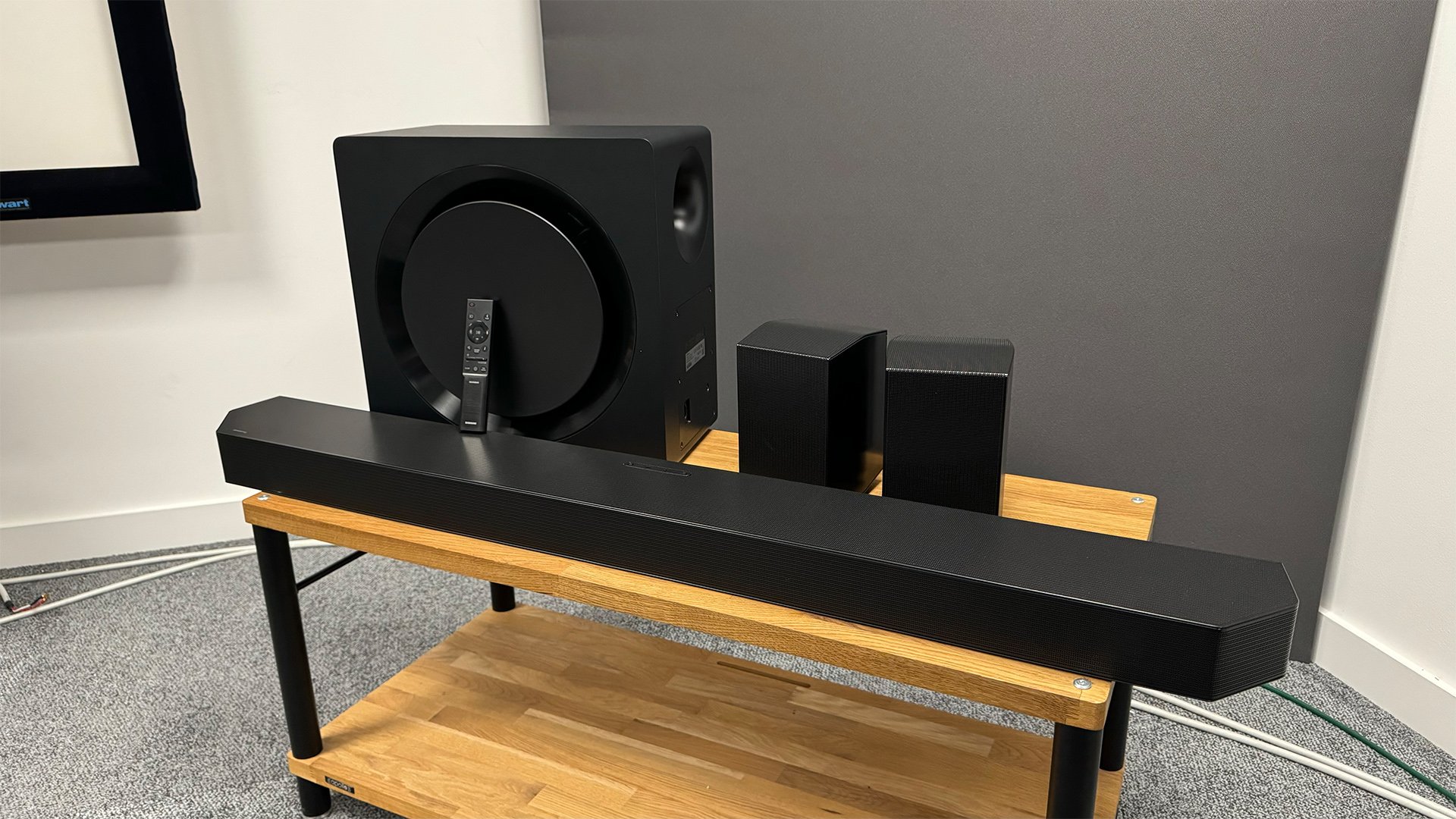
At the risk of pointing out the blooming obvious, Samsung sells a lot of TVs. And, while we have no actual evidence, we predict that it absolutely hates it when people combine those TVs with soundbars from other brands.
That’s why it (and fellow/rival TV-producing mega-brand LG) is so determined to produce market-leading soundbars of its own. It’s been getting steadily closer to that lofty ambition in recent years, too, with last year’s flagship Q990C model falling just a whisker short of a five-star verdict.
That model’s replacement, the Q990D, is now looking to achieve what its predecessor couldn’t quite. Conceptually, little has changed: this is a full system consisting of a soundbar, wireless subwoofer and two wireless surround speakers, with a massive 11.1.4 total channel count. Feature upgrades are few but meaningful, particularly for gamers, but the real upgrade is to the sound.
Price
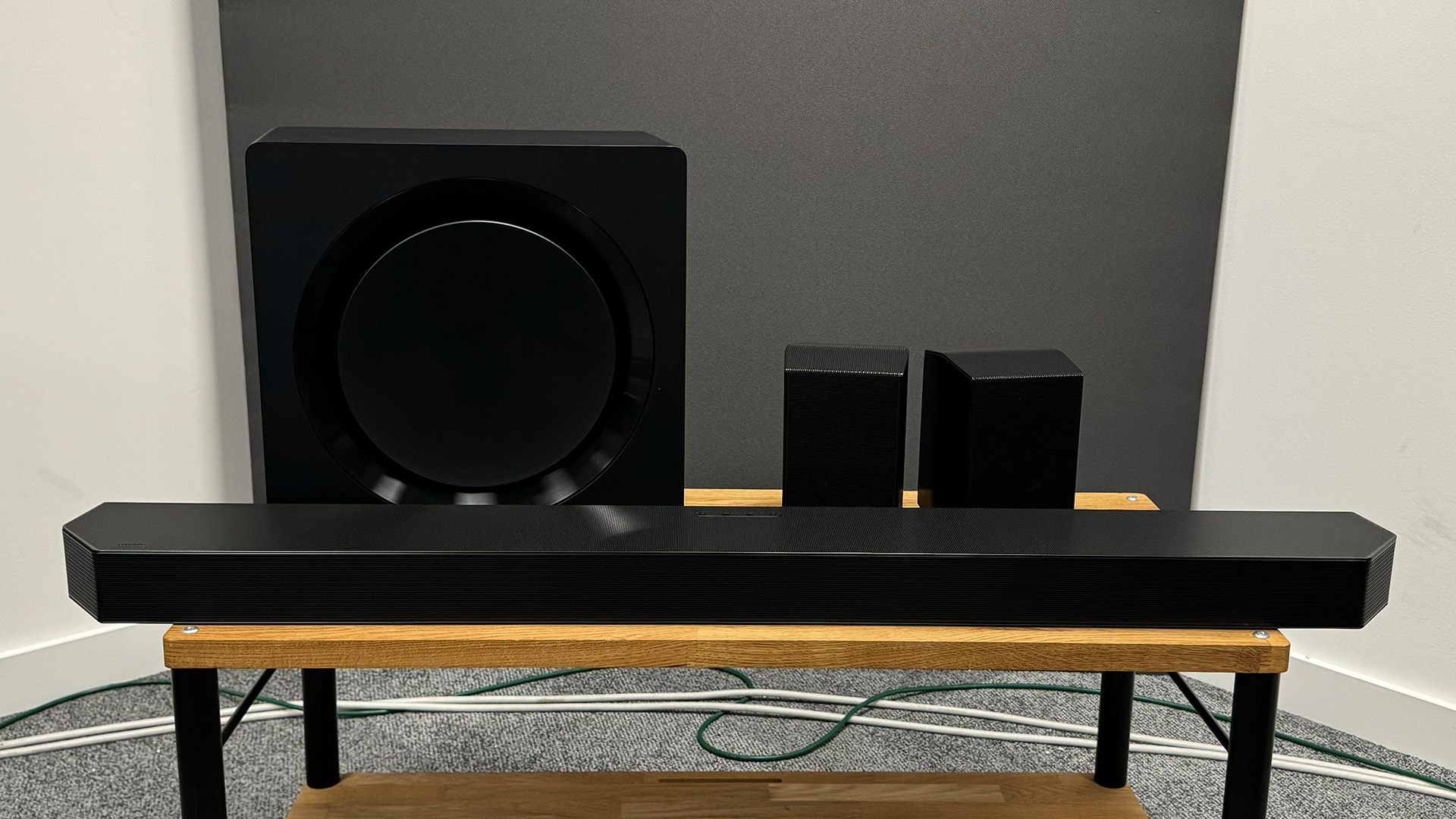
The launch price of the Samsung HW-Q990D is £1699 / $2000 / AU$2099, but it is already available with some decent discounts. Expect that discounting to continue throughout the year – the outgoing Q990C, which launched at a very similar price to the Q990D, is now available for around £900 / $1100 / AU$1500.
While the Q990D is certainly a premium proposition, it’s worth bearing in mind that an equivalent Sonos set-up consisting of an Arc, Sub and two Era 300 speakers (the so-called Ultimate Immersive Setup with Arc) will set you back £2076 / $2076 / AU$4081.
The Sony HT-A7000, meanwhile, costs £1299 / $999 / AU$1699 for just the ’bar alone. Adding the appropriate subwoofer and wireless speakers would take the total to around £2500 / $2100 / AU$3500.
The JBL Bar 1300 is another soundbar system that is similarly priced to the Samsung Q990D, but its detachable, battery-powered speakers won’t be for everyone (though they will be very appealing to others). The Yamaha True X Soundbar System is another opinion at this level, but its sound is lacking some of the height that many will be looking for from a Dolby Atmos system.
In other words, for a full system with the sort of feature set that it has, the Q990D actually looks like pretty good value – and it will only become more so as those additional discounts appear.
Design
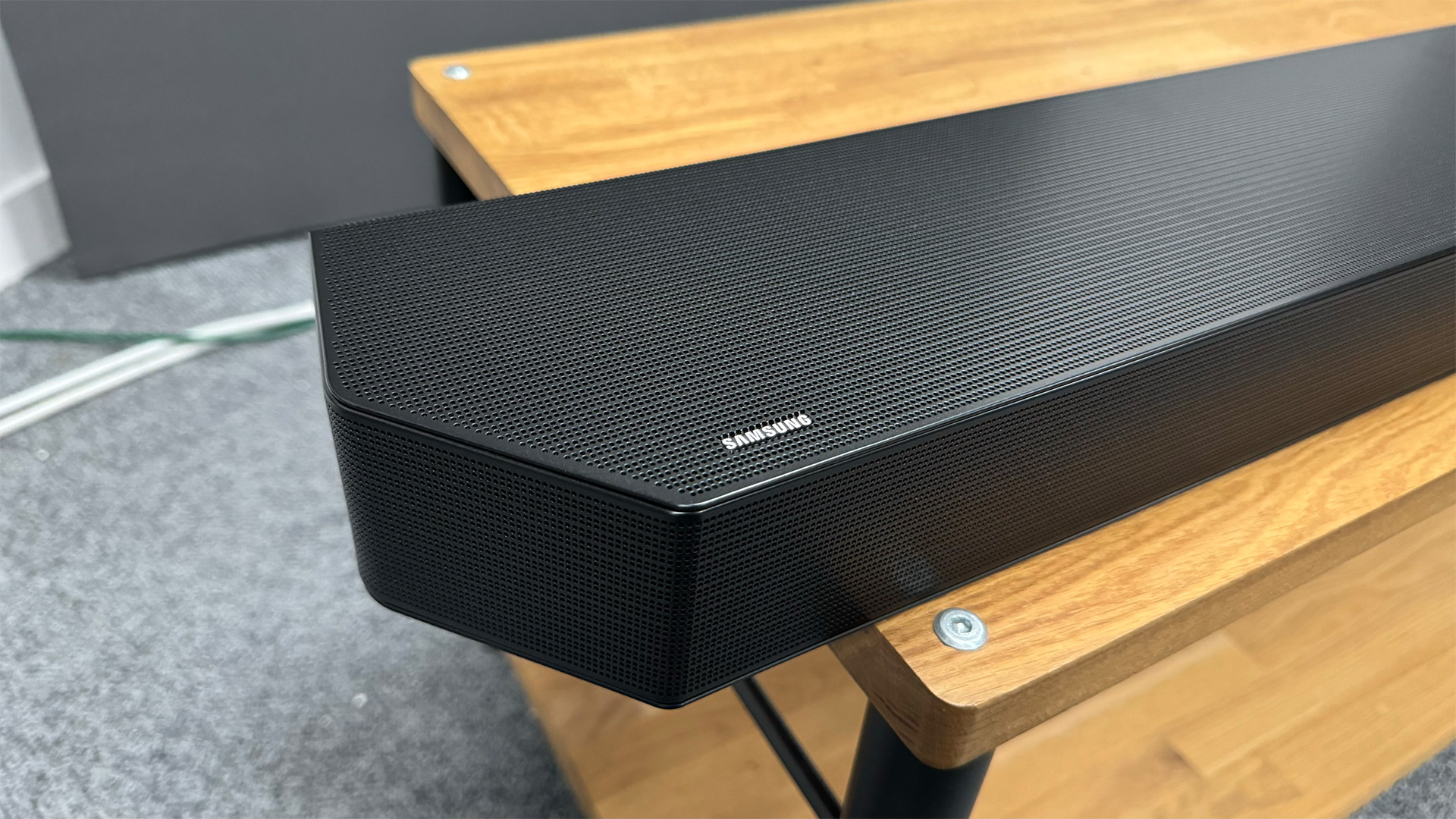
Other than a slightly darker shade of grey that makes it almost black, the Q990D looks more or less identical to the Q990C it replaces, and that looked very similar to the Q990B of the previous year. The angular, monolithic design of the bar and satellites is starting to look a bit dated and will be a bit too severe for some tastes, but there are plenty of sensible design elements, such as the fairly non-reflective finish and relatively stout height of the bar at just under 7cm, which means the system blends into a dark room and doesn’t obstruct the bottom of a typical TV.
Interestingly, the subwoofer features a smoother and slightly softer-looking design, which seems sensible given its large dimensions of 41 x 22 x 41cm.
At 123cm, the bar itself is the same width as a modern 55-inch TV, but it certainly doesn’t look peculiar when paired with a 65-inch model, as it is for our testing. Thin isolating feet are positioned on the underside of the bar around 20cm from each end, which might mean they’re too far apart for some furniture. They’re also too shallow to allow the bar to straddle a typical TV stand. Thankfully, Samsung has considered this and supplies additional isolation pads within the box so that the bar can be placed directly on top of the bottom plate of a TV pedestal stand.
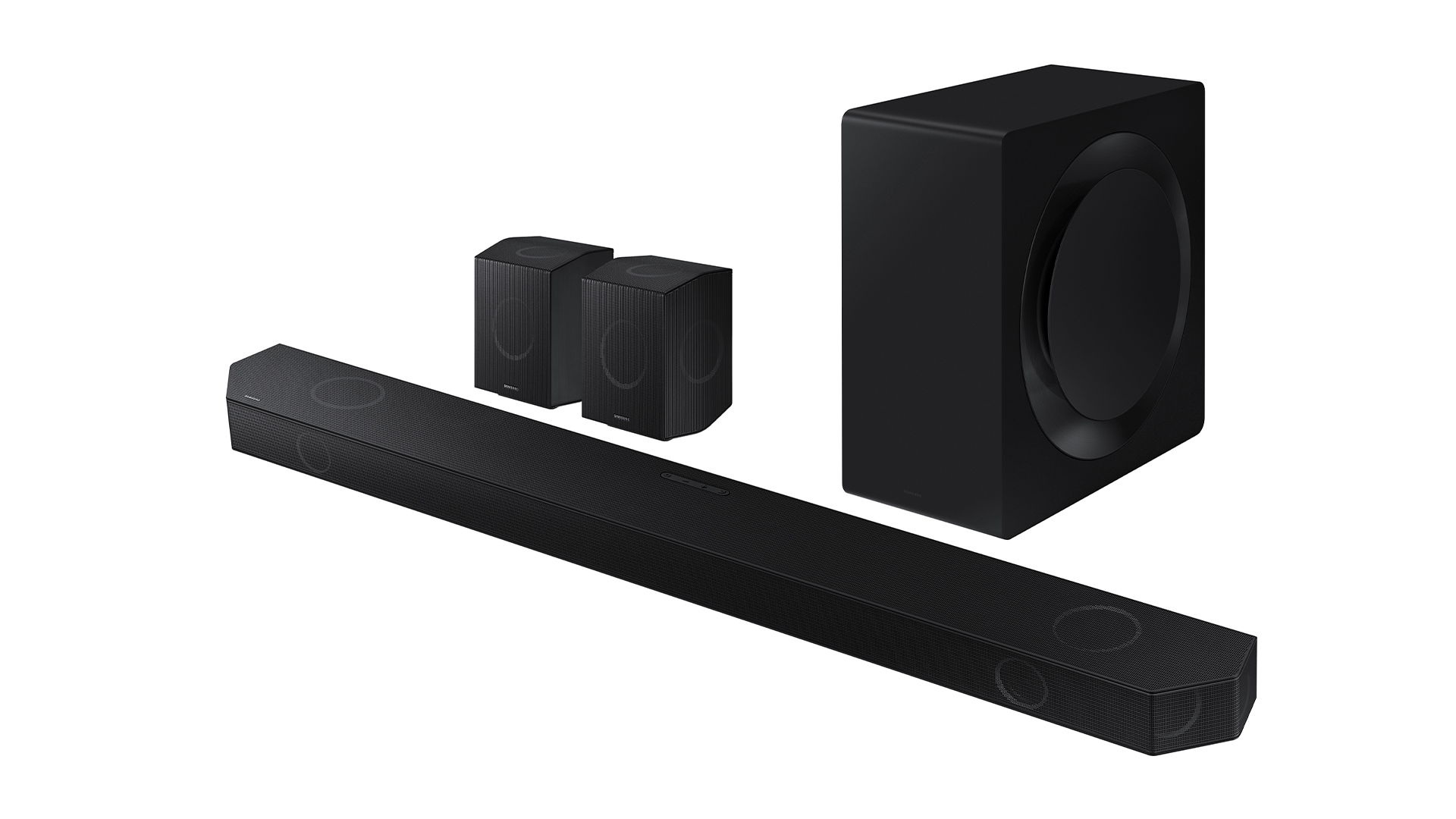
Connectivity HDMI out (eARC), 2 x HDMI 2.1 in, optical, wi-fi, Bluetooth 5.0, AirPlay 2
Format support Dolby Atmos, Dolby TrueHD, Dolby Digital Plus, DTS:X
Streaming Spotify Connect, Amazon Music, Deezer
Voice control Amazon Alexa
Soundbar dimensions (hwd) 6.9 x 123 x 14 cm
Soundbar weight 7.7kg
Surround speaker dimensions (hwd) 20 x 13 x 14 cm
Surround speaker weight 3.4kg
Subwoofer dimensions (hwd) 41 x 22 x 41 cm
Subwoofer weight 11.7kg
Those more interested in wall mounting will also be pleased to learn that simple brackets for the bar are also included in the box, and each of the two satellite speakers has a threaded hole for easy mounting – though you will need to purchase brackets for these separately. The thoughtfulness continues in the form of extra-long power cables for the satellite speakers. If they’re still not long enough for your needs, a longer, third-party figure-of-eight mains cable is all you need – as long as the connection is right-angled.
While clearly carefully considered in many ways, there are a couple of elements of the soundbar’s design that could be improved upon. For one, the three HDMI ports (more on which below) are a little awkward to access. Though, in fairness, most home users shouldn’t need to access them regularly.
The display is more of an issue. It’s a small dot matrix affair positioned on the right-hand side of the soundbar’s front panel, and it has room for just three characters at once, so you often have to wait for it to scroll. Even without the rather old-school scroll, it’s not very clear, particularly from across the room, and that can be a pain when trying to adjust settings. This also makes the remote control slightly less useful than it should be. It’s worth remembering, of course, that many rival soundbars have no display at all and, like those rivals, the Q990D can be controlled entirely via smartphone app.
The top panel has just four buttons: volume up, volume down, a multi-function button (that turns the unit on when it’s in standby and switches input when it’s on) and a microphone on/off button. A red LED shines from the front of the unit when the mic is disabled, but as well as losing Alexa functionality, the SpaceFit room optimisation will also become unavailable – more on that shortly.
Features
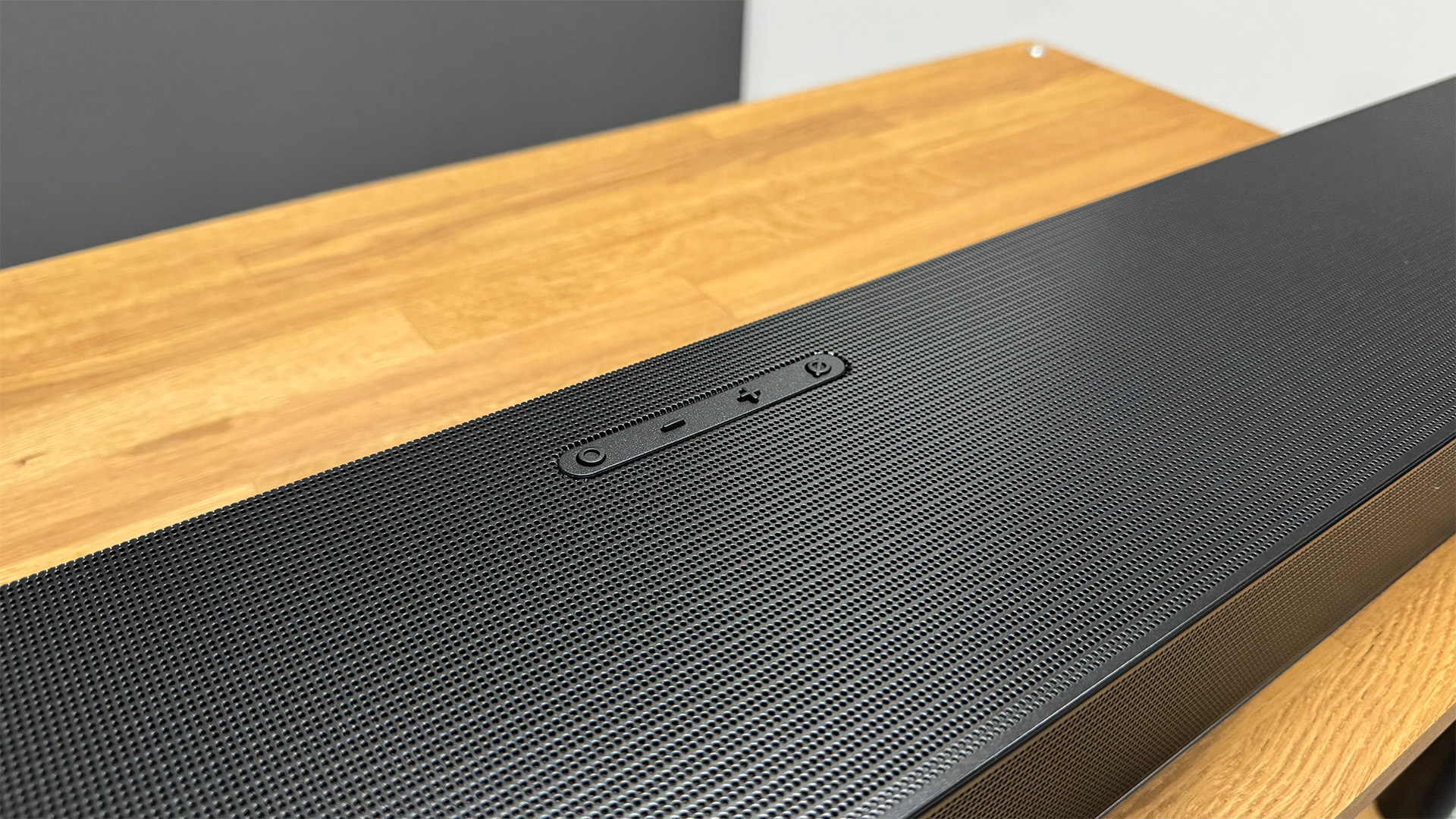
As mentioned, this is an 11.1.4-channel system, and it has 22 drivers in total. The ‘bar itself features six elliptical midrange drivers and three tweeters that fire forwards, plus four side-firing drivers and two up-firers. Each of the surround speakers features one forward-, one side- and one up-firing driver, and the subwoofer has a 20cm driver hidden behind a smart-looking plastic plate. Samsung recommends that the surround speakers be placed behind the listening position at a 135-150-degree angle, though the system will of course compensate if you instead have to put them to the sides.
Speaking of compensation, the Q990D features Samsung’s SpaceFit automatic calibration. This uses the microphone built into the soundbar itself and is constantly running whenever the SpaceFit setting is selected – there’s no messing about with test tones or external microphones here.
There are four main audio presets to choose from: Standard (which is designed to reproduce the ‘original sound’), Surround (which aims to deliver a ‘wider soundfield’), Game Pro (which Samsung says ‘provides stereoscopic sound to immerse you in the action’) and Adaptive Sound (which ‘analyses the content in real-time and automatically provides the optimal soundfield based on the characteristics of the content’).
Digging into this a little bit deeper, we see that in Standard mode, the system will output sound using the number of channels in the original signal, so 2.0, 5.1, 7.1 or 7.1.4. That means it will never use the full 11.1.4 channels. Surround, Game Pro and Adaptive all up-mix all signals to 11.1.4. In terms of sound formats, both Dolby Atmos and DTS:X are supported (as well as the surround versions of both technologies).
There are then a number of additional toggleable modes: Active Voice Amplifier (which ‘analyses external noise in real-time while the soundbar is playing, so that voice audio can always be heard clearly’), Voice Enhancement, Bass Enhancement, Night Mode and Virtual. Night Mode reduces bass and dynamics and can be useful for late-night viewing when you don’t want to disturb other people in the house, but it’s unlikely that you’ll feel the need to use those other features.
Using the remote, you can also adjust the volume of individual speakers, but this is a slightly fiddly process that would make much more sense in the app, where it’s peculiarly absent. Thankfully, trimming individual speakers shouldn’t be necessary, and there’s a dedicated volume control for the subwoofer, should you feel the need to quickly dial up or down the bass.
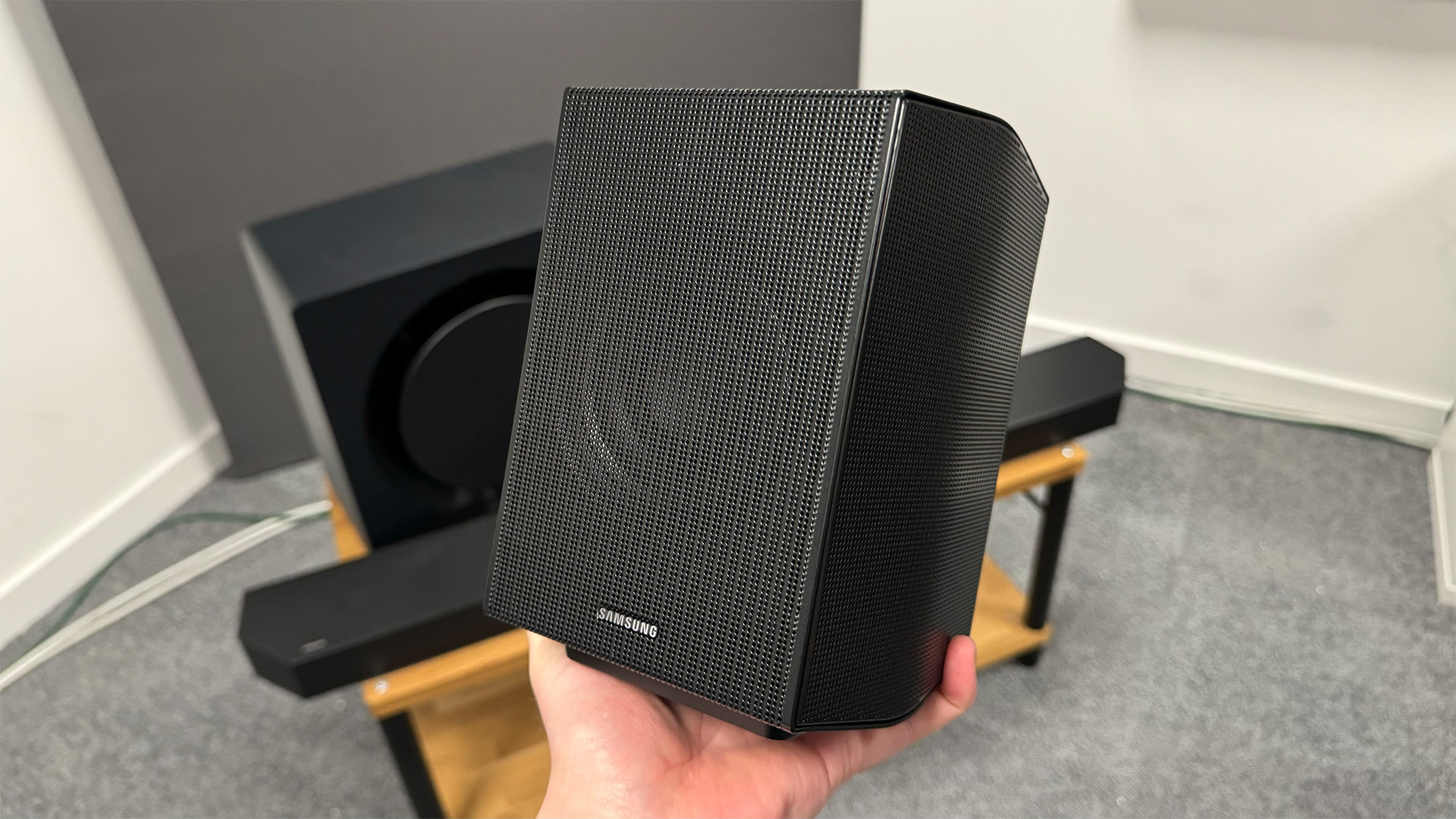
The main feature improvement for the Q990D is the HDMIs, which have been upgraded to 2.1-spec, with full support for advanced gaming features such as 4K/120Hz, VRR and ALLM. And while Samsung’s TVs don’t support Dolby Vision, the ’bar will pass through Dolby Vision signals as well as HLG, HDR10 and HDR10+. There are many soundbars that have no HDMI inputs at all, with just a single HDMI eARC port for connection to a TV. The fact that the Q990D has two HDMI inputs will be a massive bonus to many, particularly those hardcore gamers who own a TV with limited HDMI 2.1 sockets.
The Q990D also has an optical input, though we don’t imagine many users will need to take advantage of that. Far more useful will be the various wireless connections, which include Chromecast, Spotify Connect and Bluetooth.
On the subject of wirelessness, we experience no dropouts whatsoever with any part of the system during our many days of testing, suggesting that the connection between the components is very robust. You can even connect the soundbar to a Samsung TV using wi-fi if you wish, though we don’t see why you wouldn’t use an HDMI cable when the devices are so close together anyway.
There are a couple of other advantages to owning both the Q990D and a Samsung TV, too. First is the general interoperability, with soundbar settings appearing in the TV’s menus. Second is Q Symphony, which allows the Q990D and TV speakers to work together to create an even wider soundstage at the front.
Sound
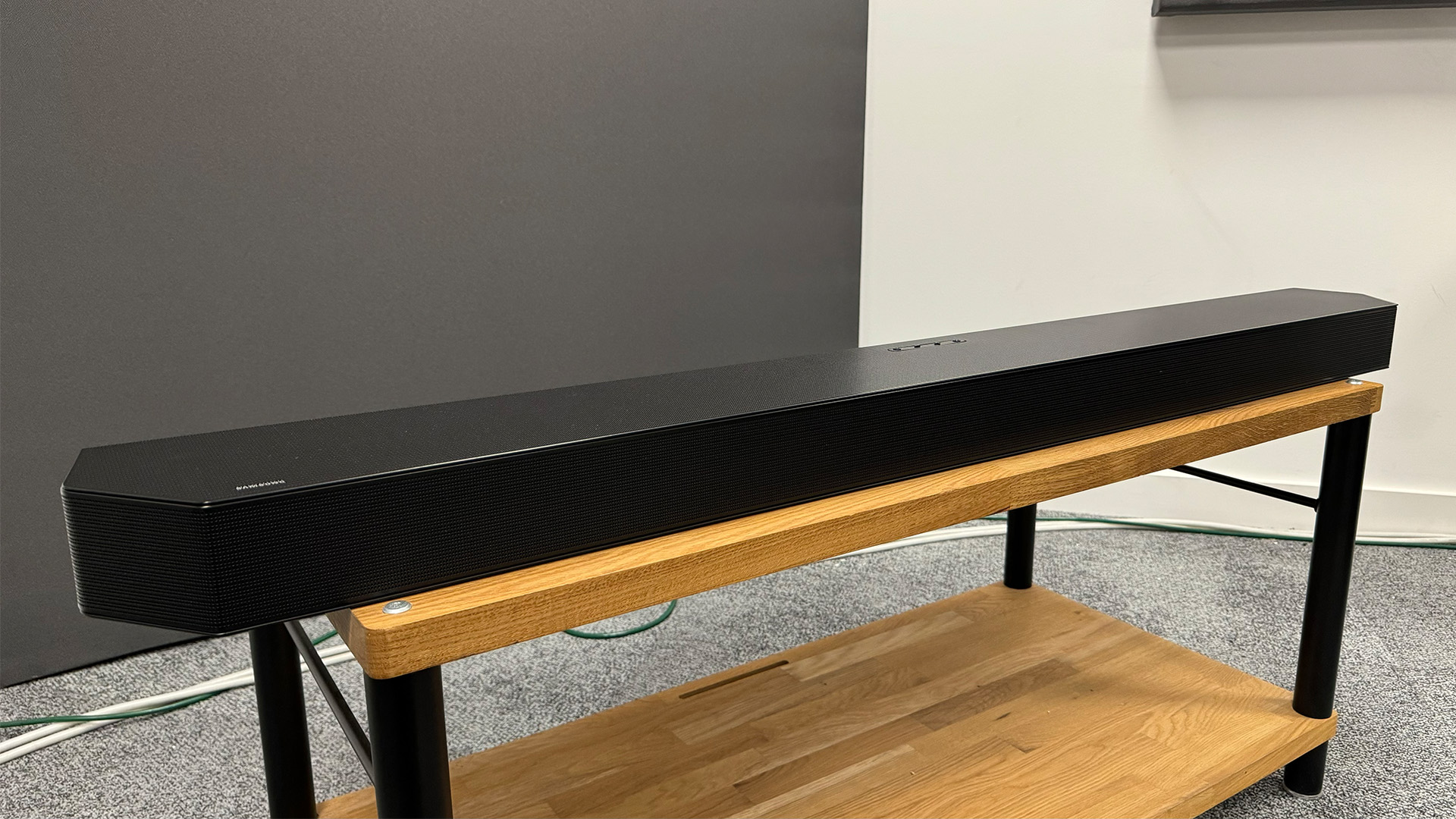
Before getting into some movie action, some notes on settings. In our room, SpaceFit works well. It brings the surrounds into play more, raising them to a level closer to the soundbar at the front and making surround atmospherics more striking, which most people will appreciate. However, if you find them occasionally distracting, turning SpaceFit off makes for a more subtle but still engaging surround experience.
For movies, our preferred processing mode is Surround, but it’s a close call between this and Adaptive. The latter is slightly more forthright in a way that’s very exciting, but it also occasionally seems to slightly exaggerate certain effects – such as the slight echo to a couple of lines of dialogue in the opening scene of Unbroken – in a way that sounds a little unnatural. These occasions are rare, though, and we expect many people will be delighted with what Adaptive does.
Our preferred Surround mode is just a touch softer than Adaptive, but it still delivers a very lively presentation that ensures there’s oodles of excitement to action scenes. The flack in Unbroken explodes with punchy precision and there’s lots of bassy meat following each initial impact, and bullets ricochet off the bomber’s metal innards with crisp definition.
The Q990D does a superb job of delivering Atmos-ness, too. It really fills the room with sound and places effects in three-dimensional space with impressive precision for a soundbar system. It’s not only that planes sweep across, above and behind the listening position, impressive though that is, but the varied distance from you that effects appear in – some very close to your ear and others across the room. Most people think of height when they think of Atmos, and the Q990D certainly delivers that, but it’s this 3D audio effect that Atmos is really about.
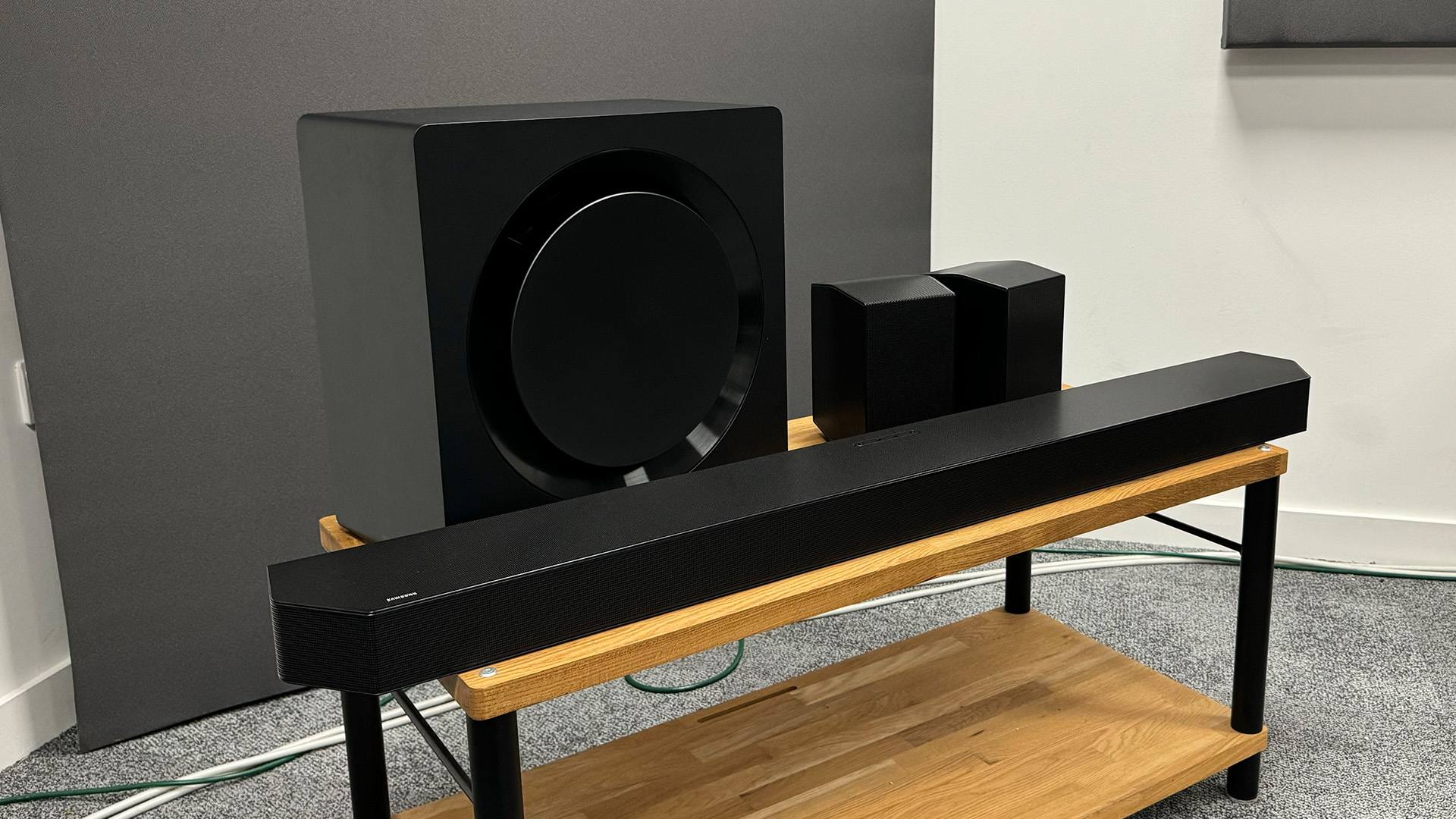
Chapter two of Blade Runner 2049 is the downfall of many a speaker system, with the near subsonic bass proving a test too far for most. The Q990D doesn’t pass the test with flying colours but it does better than most. So while there is a hint of crackle from the subwoofer and (somewhat surprisingly) the rear speakers, it’s quickly controlled and there’s none of the sustained chuffing with which many products suffer. And while the subwoofer isn’t terribly tonally flexible, it does keep up with the general rhythm of the bassline and therefore lends the necessary foreboding to the dramatic build-up.
Speaking of dramatic build-ups, the Q990D is an impressively dynamic performer overall, particularly in terms of those big shifts in volume. It’s pretty good at low-level dynamics, too. There are rivals that are a little more subtle and nuanced, but the Q990D is still perfectly capable of conveying the emotion in lines of dialogue.
Said dialogue is always clear, too, even when the presentation is jam-packed with other sounds. The system does a good job of picking out fine details in these moments, too, such as the mechanical whirring of a gun emplacement in Unbroken and the rain on the glass of K’s car in Blade Runner 2049.
Switching to stereo music, the Adaptive mode works fairly well, with the system doing an admirable job of separating the various strands of Tool’s Invincible and spreading the stereo signal around the system's 11.1.4 channels. Played in this way, music sounds full-bodied, dynamic and clear, and some will enjoy hearing their favourite tracks converted to a fairly Atmos-like presentation.
There are those, though, who prefer to hear stereo music as it was intended, and we broadly count ourselves among them. Using the Q990D in this way means switching to Standard, at which point the sub and surrounds are disabled. The sound is still decent in this mode, with good clarity, energy and tonal balance. The Sonos Arc is still the more musical performer overall, thanks to its superior rhythmic drive and spatial organisation, but the Q990D is more than up to a spot of music streaming when you want a break from Dolby Atmos movies.
The overall comparison with the Q990C is a positive one. The Q990D has more bite and punch, and also more low-level dynamic subtlety, which is particularly noticeable in voices. The bass is also more present but at the same time more seamlessly integrated, so while it adds more weight to effects they also sound more natural. This improved tonal cohesion combines with improved spatial cohesion (the surrounds integrate with the ’bar even better this time around) to make for a general improvement to the immersion of the presentation.
Finally, a note on Q-Symphony. As should now be abundantly clear, the Q990D is a very good soundbar system overall, but our experience suggests that it's even better when used with a compatible TV. Mileage will vary based on the specific TV model you have, but in conjunction with our S95D review sample, the Q990D indeed produces the promised wider soundstage and also raises dialogue so that it appears to be coming directly from the screen. Technologies such as this have always struggled to convince us tonally, but other than a small exaggeration of sibilance that only becomes an issue when you're listening at almost oppressive volume levels, the blend of 'bar and TV is nearly seamless.
Verdict
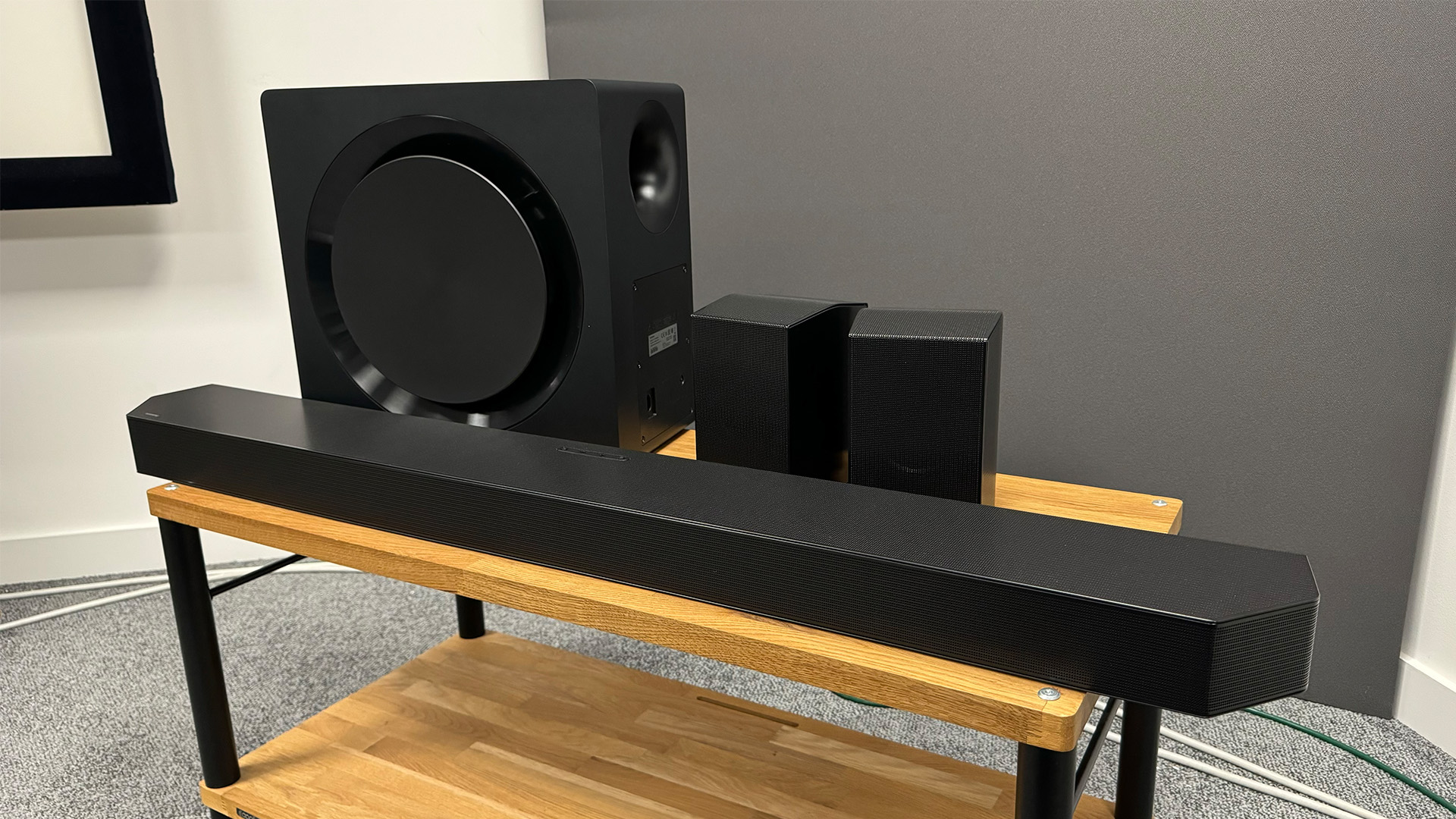
The step up from the Q990C to the Q990D isn’t huge, but a number of small refinements mean that this new model crosses into five-star territory. It’s a hugely compelling package overall, and while it’s certainly not cheap, it is good value compared with alternative systems that offer similar specs and features.
If you want something approaching ‘proper’ Atmos sound without buying an AV amplifier and twelve individual speakers, it has to be on your shortlist.
SCORES
- Sound 5
- Build 4
- Features 5
MORE:
Read our review of the Samsung Q990C
Also consider the Sonos Arc
Read our JBL Bar 1300 review







